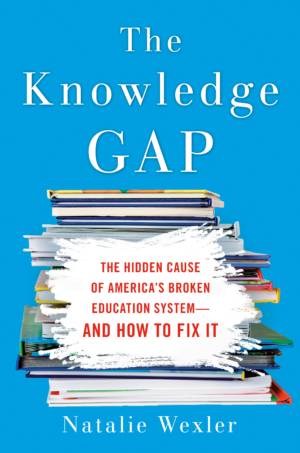It turned out that prior knowledge of baseball made a huge difference in students’ ability to understand the text—more of a difference than their supposed reading level. The kids who knew little about baseball, including the “good” readers, all did poorly. And among those who knew a lot about baseball, the “good” readers and the “bad” readers all did well. In fact, the bad readers who knew a lot about baseball outperformed the good readers who didn’t.
In another study, researchers read preschoolers from mixed socioeconomic backgrounds a book about birds, a subject they had determined the higher-income kids already knew more about. When they tested comprehension, the wealthier children did significantly better. But then they read a story about a subject neither group knew anything about: made-up animals called wugs. When prior knowledge was equalized, comprehension was essentially the same. In other words, the gap in comprehension wasn’t a gap in skills. It was a gap in knowledge.
The implication is clear: abstract “reading ability” is largely a mirage constructed by reading tests. A student’s ability to comprehend a text will vary depending on his familiarity with the subject; no degree of “skill” will help if he lacks the knowledge to understand it. While instruction in the early grades has focused on “learning to read” rather than “reading to learn,” educators have overlooked the fact that part of “learning to read” is acquiring knowledge.
 Research has established that one aspect of reading does need to be taught and practiced as a set of skills, much like math: decoding, the part that involves matching sounds to letters. The problem is that the other aspect of reading—comprehension—is also being taught that way. While there’s plenty of evidence that some instruction in some comprehension strategies can be helpful for some children, there’s no reason to believe it can turn struggling readers into accomplished ones.
Research has established that one aspect of reading does need to be taught and practiced as a set of skills, much like math: decoding, the part that involves matching sounds to letters. The problem is that the other aspect of reading—comprehension—is also being taught that way. While there’s plenty of evidence that some instruction in some comprehension strategies can be helpful for some children, there’s no reason to believe it can turn struggling readers into accomplished ones.
That’s particularly true when it comes to nonfiction, which generally assumes more specialized background knowledge. To acquire the knowledge and vocabulary that will help them understand nonfiction, children need to do more than read a single book on a topic before skipping to another one while practicing how to identify text features or determine text structure. They need to stick with a topic for days or weeks, encountering the same vocabulary and concepts repeatedly so they will stick. Knowing how to identify a caption in a book about sea mammals is unlikely to help them understand a book about the solar system or the Civil War.
It’s not so much that particular bits of information are vital in and of themselves—although some certainly are. It’s more that people need to have enough facts in their heads to have what one commentator has called “a knowledge party”—a bunch of accumulated associations that will enable them to absorb, retain, and analyze new information. Education certainly shouldn’t end with facts. But if it doesn’t begin there, many students will never acquire the knowledge and analytical abilities they need to thrive both in school and in life.
Children of wealthier and more educated parents may not be gaining much knowledge of the world at school, but they typically acquire more of it outside school than their disadvantaged peers. And that often boosts their performance on tests. In countries that have a national curriculum, standardized tests can focus on the content required at each grade level. But in the United States, where schools are all teaching different things, test designers try to assess general reading ability by presenting students with passages on a range of subjects and asking multiple-choice questions. Many of these questions mirror the American approach to literacy
instruction: What’s the main idea? What’s the author’s purpose? What inferences can you make?
Test designers also attempt to compensate for the inevitable variation in students’ background knowledge. Students living in the West might happen to know more about the Rocky Mountains, while those in the South might know more about hurricanes. So the tests might include one passage on each topic. But kids with less overall knowledge and vocabulary are always at a disadvantage. While the tests purport to measure skills, it’s impossible for students to demonstrate those skills if they haven’t understood the text in the first place.
The bottom line is that the test-score gap is, at its heart, a knowledge gap. The theory behind skills-focused instruction is that if students read enough, diligently practicing their skills, they will gradually advance from one level to the next, and their test scores will improve.
But there’s little evidence to support that theory. Often, difficulties begin to emerge in fourth grade, when children are confronted with nonfiction and texts that use more sophisticated vocabulary. At high-poverty schools, it’s not unusual to find eleventh- and twelfth-graders reading at fifth- or sixth- grade levels. In many cases, they continue to be assigned texts at their individual levels rather than at the levels expected for their grade—the levels that most of their more affluent peers have reached.
“Leveled texts,” one reading expert has observed, “lead to leveled lives.”
It’s not that educators are unaware of the importance of knowledge and vocabulary. One frequently taught reading comprehension strategy is “activating prior knowledge.” If the story is about a trip on an airplane, for example, the teacher might ask kids if they’ve ever taken one. And if a text assumes knowledge many students don’t have, he might quickly supply it. But that kind of on the spot injection of information is unlikely to stick without reinforcement.
Teachers are more likely to be aware of the need to build students’ vocabulary rather than their knowledge; those gaps are more obvious, and more research has been done on the importance of vocabulary to comprehension. To be sure, it’s important to focus on words that are used frequently in academic writing but are unlikely to be acquired through spoken language—words like merchant, fortunate, and benevolent. But it’s impossible to equip children with all the vocabulary they need by teaching it to them directly.
During the first several years of schooling, children add eight words a day to their vocabularies, on average; the only way to expand vocabulary that quickly is to expand knowledge. A single word is often just the tip of an iceberg of concepts and meanings, inseparable from the knowledge in which it is embedded. If you understand the word oar, for example, you’re probably also familiar with the concepts of rowboats and paddling.
But building knowledge is trickier than teaching vocabulary. Teachers sometimes overestimate what children already know: I watched a class of second-graders struggle for half an hour through a text about slavery before their teacher realized they didn’t understand the word slavery. Kindergarteners in one low-income community had an average score in the fifth percentile on a vocabulary test, which reflected their inability to identify pictures showing the meanings of words like penguin, sewing, or parachute, and educators have told me of students who don’t know simple words like behind and bead.
At the same time, teachers can underestimate students’ capabilities. In addition to limiting children to books at their supposed levels, they may explain an entire text in simple language before reading it aloud, thus depriving students of the chance to wrest meaning from complex language themselves.
“I believe what everybody believes,” said one fifth grade teacher at a high-poverty school in Nevada. “I don’t mean to believe it, but it gets into you—this idea that certain learners are less capable of engaging with certain content. And I think that we’ve been making a lot of mistakes based in compassion for our students . . . We make this great effort to smooth the road for them.”
After experimenting with a text she was sure would be too challenging for her students—and being surprised by how well they did—she came to realize that she’d been doing them a disservice. “Unless they learn to navigate the bumps,” she said, “we’re not teaching them to be thinkers or readers.”




 Natalie Wexler
Natalie Wexler